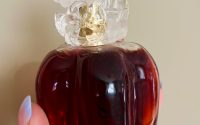The yearly Shopper’s Tutorial to Pesticides in Produce is out, and the moment once again, strawberries and spinach topped the guide’s 2024 “Dirty Dozen” checklist of generate with the most pesticides.
Every yr, the Environmental Doing the job Team (EWG), an environmental and wellness advocacy business, releases a new Consumers Guidebook to Pesticides in Deliver to support teach purchasers about deciding on fruits and greens. The emphasize of this guide is the annual “Dirty Dozen” checklist, which highlights the 12 fruits and greens selected as the “most contaminated with pesticides,” primarily based on the EWG’s research of data from the U.S. Department of Agriculture and Food and Drug Administration. The group’s annual report also involves a a “Clean Fifteen” checklist of develop with low quantities or no traces of pesticides.
EWG’s push release saying the findings notes that “four of the 5 most commonly detected chemicals are fungicides: fludioxonil, pyraclostrobin, boscalid and pyrimethanil.” Fungicides are generally utilized to generate following it is harvested to retain it free from mildew on the way to the grocery keep.
“Everyone – grownups and young ones – ought to eat additional fruits and greens, no matter whether organic or not,” EWG Senior Scientist Alexa Friedman, Ph.D., claims in the push launch. “But consumers anxious about pesticide publicity can use the suite of elements in EWG’s Shopper’s Guide to Pesticides in Deliver to make the ideal selections for them and their families.”
Fruits and vegetables are the cornerstone of balanced eating. The Facilities for Ailment Handle and Prevention recommends grown ups consume 1.5 to 2 cups of fruit and 2 to 3 cups of veggies each day. Even so, the use of chemical substances in regular crop output raises worries for some individuals, thanks to pesticide use becoming connected to various wellness troubles in research.
Contents
Why Some Farmers Get Problem With The Soiled Dozen Listing
Agricultural professionals don’t disagree with the EWG results about the presence of pesticides in nonorganic generate. Even so, experts and farmers say it is vital to recognize that the existence of pesticides is not dangerous on its own. Alternatively, it is how significantly is existing that need to concern consumers.
“The dose helps make make poison, not its existence or absence, and that does determines the likely for harm,” mentioned Carl Wintertime, College of California, Davis emeritus professor of cooperative extension, instructed CNN. “In a lot of scenarios you’d have to be exposed to a million occasions extra than what we’re exposed to before you’d even see any effects.”
The Alliance for Foods and Farming issued a statement towards the Filthy Dozen list, citing investigation in the Journal of Toxicology which shows the EWG’s suggestion “to substitute natural and organic varieties of create for standard does not outcome in any lessen in threat to buyers mainly because residues on conventionally grown are so lower, if existing at all.”
All of the samples examined for EWG’s 2024 report did tumble inside lawful ranges established by the Office of Agriculture and the Food and drug administration. Also, in the report, the checklist authors also condition in the report methodology that they search at pesticides equally and and “do not factor in the pesticide degrees deem suitable by the Environmental Safety Company.”

What Foods Are on the ‘Dirty Dozen’ Checklist?
EWG analyzed 47,510 samples of 46 fruits and vegetables to figure out which kinds had the most pesticide residue.
“The USDA peels or scrubs and washes create samples in advance of they are analyzed, while the Food and drug administration eliminates only filth first,” the report states. “Even after these methods, the agencies’ exams however identified traces of 254 pesticides in all fruits and vegetables analyzed — and 209 of these have been on Dirty Dozen create.”
The evaluation identified that 75% of common generate had pesticide residue, and for the Filthy Dozen, 95% of samples experienced pesticide residue.
Even though a few factors have swapped destinations on this year’s checklist — grapes, at No. 8 last year, rose to No. 4 in 2024 — the exact same 12 fruit and greens ended up on the 2023 Dirty Dozen record.
The 2024 Soiled Dozen are:
- Strawberries
- Spinach
- Kale, collard and mustard greens
- Grapes
- Peaches
- Pears
- Nectarines
- Apples
- Bell and warm peppers
- Cherries
- Blueberries
- Inexperienced Beans
Extra: How to wash fruit with vinegar

The EWG’s Cleanse Fifteen lists the create products that had the minimum quantity of pesticide traces. The 2024 record has stayed mostly the similar, with this year’s top 10 matching previous year’s. The base five have shifted spots but are the similar fruits and vegetables.
The 2024 Thoroughly clean Fifteen are:
- Avocado
- Sweet corn
- Pineapple
- Onions
- Papaya
- Sweet peas (frozen)
- Asparagus
- Honeydew melon
- Kiwi
- Cabbage
- Watermelon
- Mushrooms
- Mangoes
- Sweet potatoes
- Carrots
A lot more: This straightforward step will maintain your bagged lettuce fresher, extended
Really should You Steer clear of The Soiled Dozen?
The EWG’s Dirty Dozen checklist raises recognition on which develop merchandise have better quantities of pesticides. Having said that, this does not suggest people today should really cease taking in their preferred fruits and veggies.
Organic make minimizes publicity to pesticides, but can be charge-prohibitive to several folks, specifically as food stuff selling prices continue being superior.

If you want to keep on to acquire and take in conventionally developed develop, you can abide by the FDA’s suggestions to properly prepare and clean fruits and veggies, like:
- slicing away bruised or ruined locations
- washing all generate less than jogging drinking water — no special cleaners are proposed
- scrubbing business develop with a clear deliver brush
- drying create with a clean up, fabric towel to lower microbes
- cooking deliver entirely to destroy any damaging germs
When no total of washing can entirely remove pesticides from clean produce, the Environmental Security Agency states its gurus are self-confident that conventionally grown fruits and greens “are safer than ever” and the company proceeds to overview and boost protection specifications regarding pesticides and foods.





